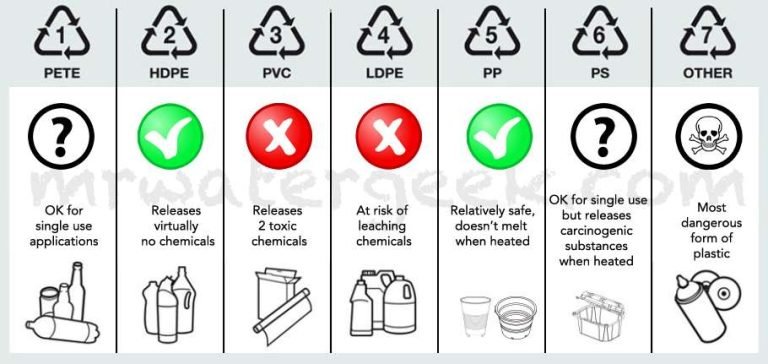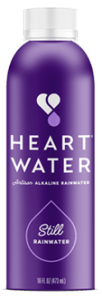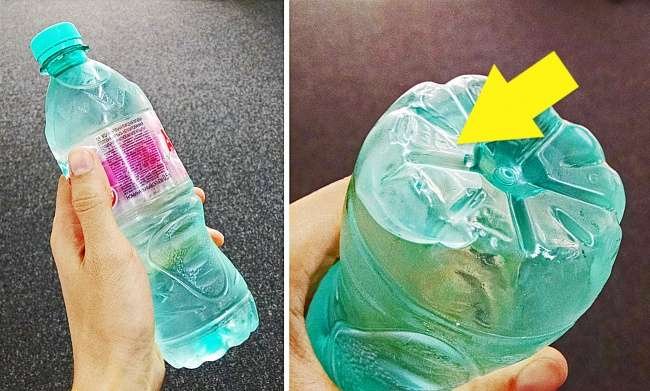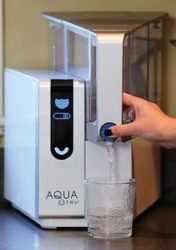- Home
- Health
- Water Softener Guide
- Water Treatment
Private Sewers & Septic Systems
- About Private Sewers Sysytem And Septic Systems
- Lateral Root Notification Program
- Fats, Oil & Grease
- Spills & Black Water Valves
- Help Protect The Enviroment
- Septic Systems
- About
Understanding BPA in Bottled Water
Bisphenol A, more commonly known as BPA, is an industrial chemical found in certain plastics. Given the health risks associated with it, it’s crucial to ensure your water bottles are BPA-free. Here’s how to navigate the plastic bottle world more safely.
Cracking the Plastic Code
Ever noticed numbers at the bottom of your plastic bottles? Those are Resin Identification Codes (RIC) that help you identify the type of plastic. For BPA-safe options, keep an eye out for bottles marked with 1, 2, or 5.

A Glimpse into Plastic Types and Their Health Impacts
- PETE or PET: Common in soft drinks and water bottles, PET is ideal for one-time use. But reusing can invite bacterial growth, and microwaving it? Definitely off-limits.
- HDPE: Found in items from milk jugs to toys, HDPE is among the safest plastics with minimal chemical release.
- PVC or 3V: Recognizable as a soft, pliable plastic, PVC releases two harmful chemicals. Best to find an alternative when possible.
- LDPE: While it doesn’t release chemicals into water, LDPE-packaged foods could potentially leach chemicals.
- PP: Polypropylene, a resilient plastic, is used in products like yogurt cups. Given its heat-resistant properties, it remains relatively safe.
- PS: Think disposable styrofoam cups. Heating PS releases harmful substances, making it unfit for extended food or drink storage.
- PC or ‘Other’: As a catch-all category for unmarked plastics, PC is among the riskiest. Typically containing BPA, they’re best avoided, especially in food or drink containers.
The Bottled Water Buying Guide

Water is vital, but not all bottled water is equal. While BPA contamination and environmental concerns have been highlighted, the truth is that some “premium” bottled water is just repackaged tap water. When you’re left with no choice but bottled water, arm yourself with knowledge:
Check for the RIC: Located at the bottle’s bottom, this number gives insight into the plastic type.
Brand Matters: Different brands use different plastics. Research helps.
Legislation is Your Friend: Stringent laws ensure plastics are labeled accurately, aiding informed decisions.

Let’s break down the maze of codes and symbols on your plastic containers and decipher their meanings. If you’ve ever been curious about what kind of plastic you’re holding, here’s how to be your own BPA detective.
Spotting BPA in Bottled Water
Every plastic container flaunts a unique graphic label, usually at its base. By understanding these codes, you’re one step closer to knowing if it contains BPA.
Decoding Plastic Types
1. PETE or PET:
Found commonly in beverages, PET is prevalent in many items. Suitable for a one-time drink, repeated use might lead to bacterial growth. Remember, microwaving or refilling such bottles is a strict no. They could release chemicals disrupting hormonal balance. Cleaning them? That’s another can of worms, often requiring harmful chemicals.
2. HDPE (Hint: Think AquaTru):
A sturdy plastic, HDPE is found in toys, oil bottles, and your everyday milk jug. Here’s the kicker: it releases nearly zero chemicals. When shopping for bottled water, HDPE should be your first pick – it’s possibly the safest bet.

3. PVC or 3V:
If you’ve come across soft, flexible plastics, you’ve met PVC. It’s in your cooking oil bottle, plastic wraps, and even some toys. What might shock you is its ability to release two toxic chemicals, both tampering with your hormonal balance. Experts advise looking for alternatives.
4. LDPE:
Not your water bottle material, yet it doesn’t leak chemicals into the water. But when it comes to food packaging? That’s a different story. The verdict from experts? Stay away from food items wrapped in LDPE.
5. PP
Those white or semi-transparent containers, like the ones holding your yogurt? That’s PP for you – a durable, heat-resistant plastic, known as Polypropylene. It boasts a solid defense against chemicals and grease.
6. PS:
Lightweight and budget-friendly, PS is everywhere – from your disposable coffee cup to food containers. But once heated, it emits harmful substances. The bottom line? Not fit for long-term use with food or drink.
7. PC or 'Other Plastics':
Here’s where things get tricky. Unlabeled plastics, often falling under the PC category, aren’t straightforward. They don’t follow the usual recycling playbook. Not just that, they’re the riskiest of the bunch and are best left untouched. Especially since most PC containers have BPA.
Final Thoughts
Navigating the world of plastics isn’t as daunting as it seems. With this guide, you’re armed with the knowledge to make informed choices, keeping BPA at bay. Always remember to treat each plastic type uniquely and prioritize your health.
Scientific References
- Watanabe I. Harada K. Matsui T. Miyasaka H. Okuhata H. Tanaka S. Nakayama H. Kato K. Bamba T. Hirata K.”Characterization of bisphenol A metabolites produced by Portulaca oleracea cv. by liquid chromatography coupled with tandem mass spectrometry”, Biotechnology & Biochemistry, 76(5):1015–7, 2012.
- Midoro-Horiuti T, Tiwari R, Watson CS, Goldblum RM (2010). “Maternal bisphenol a exposure promotes the development of experimental asthma in mouse pups”. Environmental Health Perspectives. 118 (2): 273–7.
- “A Survey of Bisphenol A in U.S. Canned Foods”. Environmental Working Group. 5 March 2007. Retrieved 2 February 2012.
- Rubin BS (2011). “Bisphenol A: An endocrine disruptor with widespread exposure and multiple effects”. J.Steroid Biochem.Mol.Bio. 127 (1–2): 27–34.








